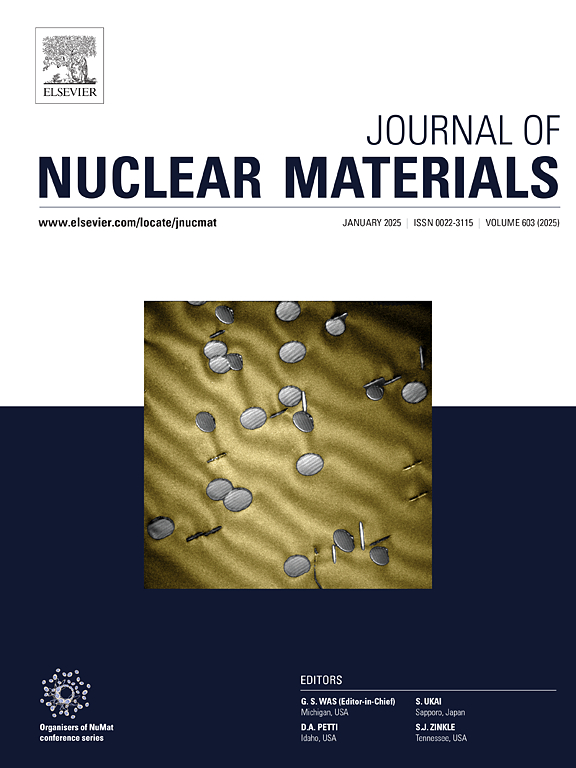Abnormal growth of loops by repulsive interaction between loops and dislocations
IF 2.8
2区 工程技术
Q3 MATERIALS SCIENCE, MULTIDISCIPLINARY
引用次数: 0
Abstract
Pre-existing dislocations have a significant impact on the evolution of radiation defects, which in turn affect the mechanical properties of materials after irradiation. However, systematic research into the question of how pre-existing dislocations affect the evolution of defects is essential and has yet to be carried out. In this work, the effect of pre-existing dislocations on loop evolution in FeCrAl alloys is investigated by in-situ transmission electron microscopy (TEM) using Fe++He++H2+ tri-beam irradiation. It is found that the dislocations exhibit a strong sink effect and the values of the number density and size of the dislocation loops are lower in regions with pre-existing dislocations. As the calculation of sink strength shows, the sink effect of dislocations can be weakened due to the initiation of dislocation gliding, by the absorption of point defects and by climbing. And this impaired sink effect is the main reasons for the formation of a V-shaped density profile. A coexisting repulsive interaction between loops and dislocations has been proposed, which also has an important effect on the evolution morphology of loops, and its validity has been demonstrated by the interaction energy calculations. The repulsive interaction of dislocations pushes the defects away, leading to a higher probability of nucleation and coalescence. This can lead to a greater number and abnormally rapid growth of loops. In addition, a stronger surface effect is found for the thinner foil, where the density is lower and the size is smaller. The finger-shaped loops are found to be absent in the thinner samples due to the annihilation of the large loops.

求助全文
约1分钟内获得全文
求助全文
来源期刊

Journal of Nuclear Materials
工程技术-材料科学:综合
CiteScore
5.70
自引率
25.80%
发文量
601
审稿时长
63 days
期刊介绍:
The Journal of Nuclear Materials publishes high quality papers in materials research for nuclear applications, primarily fission reactors, fusion reactors, and similar environments including radiation areas of charged particle accelerators. Both original research and critical review papers covering experimental, theoretical, and computational aspects of either fundamental or applied nature are welcome.
The breadth of the field is such that a wide range of processes and properties in the field of materials science and engineering is of interest to the readership, spanning atom-scale processes, microstructures, thermodynamics, mechanical properties, physical properties, and corrosion, for example.
Topics covered by JNM
Fission reactor materials, including fuels, cladding, core structures, pressure vessels, coolant interactions with materials, moderator and control components, fission product behavior.
Materials aspects of the entire fuel cycle.
Materials aspects of the actinides and their compounds.
Performance of nuclear waste materials; materials aspects of the immobilization of wastes.
Fusion reactor materials, including first walls, blankets, insulators and magnets.
Neutron and charged particle radiation effects in materials, including defects, transmutations, microstructures, phase changes and macroscopic properties.
Interaction of plasmas, ion beams, electron beams and electromagnetic radiation with materials relevant to nuclear systems.
 求助内容:
求助内容: 应助结果提醒方式:
应助结果提醒方式:


